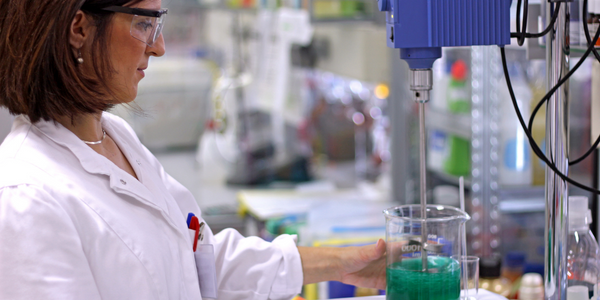下载PDF
On Track to Process Excellence: Business Process Management Implementation
技术
- 应用基础设施与中间件 - API 集成与管理
适用行业
- 化学品
适用功能
- 商业运营
用例
- 过程控制与优化
服务
- 系统集成
- 培训
挑战
Brenntag Europe, a world leader in international chemical distribution, was facing challenges due to its continuous growth. The growth had led to a highly disparate and inefficient IT environment. There was a lack of enterprise-wide process standardization and visibility. The company also needed to comply with Sarbanes-Oxley criteria and improve its quality management for ISO certification and audits. The company desired to implement a consistent operational foundation, built with standardized and modular processes, to facilitate simplified implementations and the optimization of existing applications.
关于客户
Brenntag is a world leader in international chemical distribution. The company employs 10,000 staff in over 300 locations, across 50 countries. Brenntag has an extensive portfolio of products and is the dominant supplier of industrial chemicals in central, eastern and northern Europe. It is the third largest provider in North America and the market leader in Latin America. The company offers its customers an unparalleled variety of industrial and specialty chemical products through a highly developed and comprehensive distribution network.
解决方案
In partnership with Brenntag project teams, Consulting Services initially implemented ARIS for SAP Solutions in a pilot project in Germany. This initiative included the capture, modeling, standardization and consolidation of existing process information into the evolving business process architecture. During the analysis phase, the project team concentrated on an existing SAP implementation to extract existing process information for comparison and inclusion in the SAP® Business Repository and ARIS. Once defined, the business processes documented in ARIS were synchronized with the integrated SAP® Solution Manager. The implementation of BPM was achieved using the Prime methodology, which is very effective for creating a process-oriented organization and optimizing value chains. All processes were documented in ARIS according to detailed target definitions. The conversion to a BPM-oriented organization was supported effectively with the communications and training plans created in the change management phase.
运营影响
数量效益
相关案例.

Case Study
Honeywell - Tata Chemicals Improves Data Accessibility with OneWireless
Tata was facing data accessibility challenges in the cement plant control room tapping signals from remote process control areas and other distant locations, including the gas scrubber. Tata needed a wireless solution to extend its control network securely to remote locations that would also provide seamless communication with existing control applications.

Case Study
Advanced Elastomer Systems Upgrades Production
In order to maintain its share of the international market for thermoplastic elastomers AES recently expanded its Florida plant by adding a new production line. While the existing lines were operating satisfactorily using a PROVOX distributed control system with traditional analog I/O, AES wanted advanced technology on the new line for greater economy, efficiency, and reliability. AES officials were anxious to get this line into production to meet incoming orders, but two hurricanes slowed construction.
Case Study
Wireless GPS Tracking & Security Monitoring
Enhancing the security of hazardous freight and ensuring compliance with Homeland Security’s Transportation Security Administration mandate that all trains carrying chemicals capable of creating a toxic inhalation condition are equipped with on-board safety monitoring systems.

Case Study
Field Device Asset Management For Chemical Company in China
Chinese chemical subsidiary of multinational corporation serves customers throughout the world. Sales offices and research and technology centers are strategically located to provide rapid response to customer requests. Just two workers were assigned to maintain thousands of intelligent instruments in three production units, so they could do little more than react to device issues as they appeared. This costly maintenance method inevitably led to unexpected downtime when a critical instrument failed. Plant management recognized the need to change from reactive to predictive maintenance for all assets, including instruments and control valves, but help was needed in implementing such a technology-based initiative.

Case Study
Industrial Workforce Mobility for Improved Safety & Operations
Huntsman Corporation, a global manufacturer and marketer of differentiated chemicals, undertook an aggressive program to eliminate injuries, product defects, and environmental releases at their Port Neches facility. Termed “Project Zero”, this program required a completely mobile solution to empower operations and maintenance personnel to capture defects, track work progress and make process and safety related decisions in real-time.






